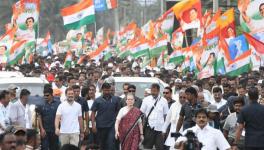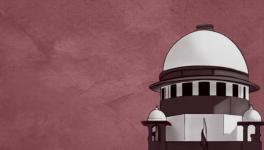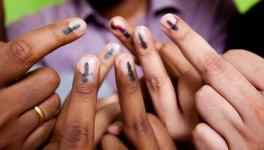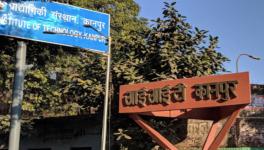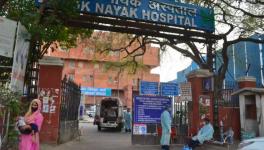PM Modi – Trapped Within His Hologrammed Image
“You can bury your head in sand like ostrich, we won’t.” These are harsh words from any court for any government. The Delhi High Court uttered these words on May 4, for Narendra Modi’s government. There was more to come. The Allahabad High Court said that death of COVID-19 patients for non-supply of oxygen to hospitals was “a criminal act and not less than genocide”. Courts had to order the government to supply oxygen on priority and threaten it with contempt notices – let that sink in.
As India clocks a month since the brutal second wave of COVID-19 swept across cities and villages sending people into hospitals ill-equipped to deal with the onslaught, as individuals despaired sourcing oxygen or procuring medicines to keep their loved ones alive, as stories mounted of seriously ill people gasping for breath and dying in parking lots or ICUs, as crematoria and graveyards struggled to cope with unusually high number of final rites, as volunteers attempted to coordinate supplies and network people with emergency care, as help-lists floated across social media with individuals reaching out to one another in a macabre twist of the government’s “atmanirbhar” mantra, as India registered the world’s highest caseload of over three lakh a day and fatality rates rose, as foreign aid piled up at Delhi airport for a week without a cogent plan for its distribution -- missing in action was India’s government, and especially Prime Minister Narendra Modi.
This would not be the first time in his political career that Modi has been linked to “genocide” but it was a rare occasion that India’s judiciary – which seemed content to give a long rope to the executive – rapped him on the knuckles.
When Indians struggled with SOS messages for oxygen or scrambled for vaccines, the Prime Minister, hailed by large sections of intelligentsia and media for his exceptional communication skills, had fallen silent. He could have – no, should have – expressed his concern at the crisis, commiserated with people’s unimaginable bereavement, shared his plan to steer the country out of the manufactured mess, at least offered a simple apology for the “viral apocalypse”, as an international newspaper put it.
Make no mistake: Modi owes us all an unconditional apology. The COVID-19 crisis turned catastrophic because of his government’s sins of omission and commission. Modi, Home Minister Amit Shah and Union health minister Harsh Vardhan allowed, encouraged or participated in super-spreader events including election rallies and Kumbh Mela.
Equally, they initially ignored and mismanaged the looming COVID-19 crisis by disregarding reports of experts in early March who projected the second wave, and then refused to step up to the occasion in late
April.
Pass Blame on the ‘System’
Instead of an all-hands-on-deck mode to address the hospital bed-oxygen crisis and course-correct the floundering vaccine programme, the government shrugged off its responsibility to state governments, deflected the blame from Modi to the “system”, sparred with embassies of foreign governments, had its law officers decry those asking for oxygen as "cry babies", spent time managing perceptions and even organising a workshop for 300 top officials “to create a positive image of the government…be seen to be sensitive, bold, quick, responsive, hard-working”.
Modi focussed on the Central Vista construction making it an “essential service”, held a virtual summit with the UK Prime Minister on defence cooperation, visited a gurudwara and went about life as if India was having a fun-filled mango-rich summer.
This is the real Modi, the man behind the mask, the person behind a well-marketed idea and manufactured image that carried him for seven years. A well-crafted and devious campaign backed by India Inc. projected him as the one-man answer to India’s ills in 2014, catapulting him from Gujarat’s three-term chief minister to India’s
Prime Minister.
Modi was projected as an administrator par excellence in having created a “vibrant Gujarat”, as a man of development who had left hardline Hindutva behind, as a common man or chaiwalla or fakir who was not invested in himself or in the trappings of power. Modi was a hologram who could be everywhere he desired.
Yet, during India’s gravest crisis, Modi was invisible. The mask has slipped during COVID-19 crisis – his unplanned and ill-advised countrywide lockdown last March turned a health emergency into a humungous humanitarian crisis, and his utterly clueless, incompetent and callous governance turned the second wave into a catastrophe.
Forget Delhi or the rest of India, Modi’s voters in Varanasi are complaining about the absence of their celebrated Member of Parliament as they desperately sought help from others to tide over the COVID-19 crisis.
The trail of mis-governance or malfeasance runs long – remember demonetisation and good and services tax rollout? – but Modi was given a free pass on every occasion by his party and sections of the mainstream media. His mismanagement or malfeasance was papered over, his vanity and love of perception indulged, his vacuous or communal speeches lauded as eloquence, his blustering or menacing style of delivery projected as oratory. He was the hard-working man who barely slept in a day, a single man who did not while away his time on unproductive emotional labour, an austere soul whose only concern was welfare of 125 crore Indians, an almost ascetic whose “fakiri” enamoured Hindi lyricists, a man who would “one day take his jhola and walk away”. Modi’s PR machinery worked harder than he was, it seemed.
It succeeded despite dissenters.
But as India grappled with its life-altering crisis since Partition, bringing disease, death and destitution to people’s doors, their lived reality has overtaken Modi’s PR-driven image. Between the idea of Modi and Prime Minister Modi now lies not just a gap but a wide chasm. More and more people, even those who voted for him twice and lustily
cheered him for construction of the Ram Mandir, are coming around to the realisation that they bought into a glitzy-packaged image behind which lies ineptitude, even callousness.
Modi’s Image ‘Exposed’
The carefully cultivated and nurtured image lies shattered among more Indians than ever, among the world’s leaders too. The idea of Modi, the hologram, has been exposed for what it always was – a manufactured one at variance with the man. When India faces COVID-19 catastrophe, Modi comes across as a leader who is consumed by his own cult. A Prime Minister so self-absorbed, arrogant and over-confident that he will not heed the advice of professionals, whose inner circle comprises men and women who cannot – or will not – tell him the truth, whose bureaucrats worry about his image and perception more than the health and humanitarian crisis at hand. The hologram Prime Minister is more hologram, less prime ministerial.
Cries of rage and despair across India, even those in Delhi, do not seem to reach him. He long stopped being the chaiwalla who had come for “chai pe charcha” to listen to Indians seven years ago. The social media that propped him up and reinforced the idea of Modi is now one large pit of grievances and wreckage. People’s emotions are finding a release in talking back to his ministers – railway minister Piyush Goyal got a mouthful for his tweet with a drone video of a train carrying oxygen even as people gasped in Delhi – and trending hashtags that were unthinkable even a year ago.
#ResignModi has been trending on Twitter on and off for a few days now. Facebook, ever the Modi loyalist, tried unsuccessfully to block the hashtag and later explained away the attempt as “a mistake”. A change.org petition started by an individual Mrunal Mathuria “India demands resignation from Prime Minister Narendra Modi” has fetched more than 7.6 lakh signatures in a few days. This may be keyboard activism but it reflects a mood change in Indians – icons like Arundhati Roy and citizens with keyboards – now openly calling upon Modi to step down. A man who grandly dismissed media or interlocutors between him and his audience must surely be aware, must be reading what his people want of him.
A great leader entrusted with crafting the destiny of 1.3 billion Indians would have, in times of grave crisis, stepped outside of his hologrammed image to reach out to experts in various disciplines and politicians of all hues to form a national advisory panel on Covid-19 – and listened to its recommendations. That Modi thought it
appropriate to do none of this but give himself a fancy residence in Central Vista and focus on perception management says all there is about the man behind the idea of Modi.
That idea stands discredited, cracked. The pity is that, in the process, the idea of India has been diminished too.
Smruti Koppikar, senior Mumbai-based journalist and columnist, writes on politics, cities, media and gender. The views are personal.
Get the latest reports & analysis with people's perspective on Protests, movements & deep analytical videos, discussions of the current affairs in your Telegram app. Subscribe to NewsClick's Telegram channel & get Real-Time updates on stories, as they get published on our website.










